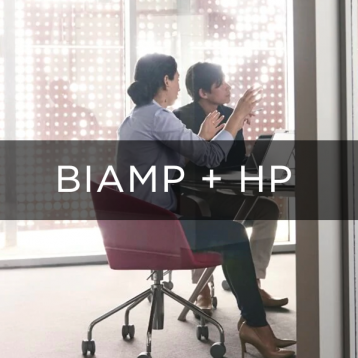Unified Communications – now there’s a thing we seem to have been talking about for a very long time. And yet, currently there are still many users experiencing un-unified communications. Messaging in Slack, whist conducting calls in Zoom, and emailing through Outlook, can be typical for one user. Meanwhile, a colleague might be trying to make video calls in Skype for Business through the Lifesize Cloud using a Polycom endpoint!
How do we dig ourselves out of this mess? AVMI may have the answer. They have been joined by industry stalwart Kennie Cole as their Unified Communications Consultant. Kennie spoke to UC News about how he feels he can help clients navigate their way out of the UC Wilderness into communications Nirvana
UCN: Congratulations on your new role. Please describe you’re your mission at AVMI. What is its scope and purpose?
KC: “AVMI continue to invest heavily in UC, having recently become the first global service integrator for Zoom, being a Polycom Platinum partner and Cisco Gold partner. As part of this continued investment, I have joined AVMI to redefine the strategy for UC, to sharpen our approach to helping clients along their UC journey, using best of breed technology and building a viable and deliverable service wrap.”
“Alongside my role creating a company strategy which includes vendor choices I will be working directly with clients to understand their business challenges, to define their UC strategy with them and support their adoption of these technologies. Clients often make decisions on UC strategies without fully understanding what outcome they are trying to achieve, which can mean that the investment potential is wasted.”
UCN: Please define the clients you typically deal with (size, vertical market, regions)
KC: “AVMI deal with a wide spectrum of clients in Banking, Tech, Retail and Public sector, many of which are global. Some of the clients AVMI has worked with are RocketSpace, Rathbones, Selfridges and the Ministry of Justice.”
UCN: It’s a competitive market these days and it’s easier than ever for IT and Facilities departments to research technology that may be suitable for your business online. What do you regard as AVMI’s role with its clients?
KC: “AVMI’s approach to clients and client solutions has always been clear and that doesn’t change with UC. AVMI work as a trusted partner to its clients, creating long term relationships, where innovation and strategy become integral to all aspects of the engagement.”
“My role within AVMI in relation to clients is to follow that trusted partner approach. Working with clients to understand the business challenges they face, the issues they are trying to resolve and the business benefits they want to drive to ensure the most viable approach to service, technology is then considered before decisions are made. UC is a journey that needs consideration if the strategy that is deployed is to be successful.”
UCN: What are the typical problems that your client is trying to solve these days?
KC: “Client challenges are common and essentially boil down to a small number of underlying problems:
· Utilisation – this subject has a number of implications and a number of causes. Underutilisation can happen due to reliability, complexity, interoperability, technical support, poor supporting processes, poor room environments and more. An underutilised solution will show poor return on investment both in terms of money and in terms of the ‘soft’ benefits such as efficiency, creativity, morale and so on
· Supportability – do the skills exist to support the solution/platform/users or is the support received externally not adding value or benefit?
· Cost – legacy solutions which include hardware-based infrastructure are typically expensive to purchase, maintain and upgrade, making it hard to realise a return but also plan an ongoing UC strategy
The key to avoiding the common challenges is approaching your UC solution from a vendor agnostic position, designing it to achieve a user experience with the correct level of functionality to realise your goal.”
“The right UC solution and UC strategy is an enabler to unlocking the creative potential of a client’s employee base.”
UCN: How can deployment of Unified Communications help them solve these problems?
KC: “A common misconception is that deploying a new UC solution will work better and provide more benefits than the previous UC solution. It is true that any latest and greatest solution should have an improved user interface and usability. It is also true that any new UC solution should have improved functionality, reliability and performance. In essence, deploying a new UC solution should enable clients to provide some quick wins for relatively little effort. The challenge is, deploying a new UC solution is a longer-term decision as it is a strategic change, not an interim one.”
“Deploying UC solutions in a considered way, driving the service and capability as the priority will provide real potential to resolve business challenges. Approach the new strategy in the correct manner will ensure functionality and, by extension vendor choices, are made based on actual requirements today and in the future. This could even mean that with the right service wrap, improvements to the usability and adoption of a client’s existing platform could be achieved, buying time to fully deploy and migrate to any new solution, this is the correct quick win approach while solving problems for the long term with ongoing benefits.”
UCN: What current technologies/ services are helping clients achieve their ambitions? What are you excited about as far as the future of UC is concerned?
KC: “There have been multiple exciting developments over the last couple of years which have made UC become more viable in different ways and to a broader number of businesses. Networks becoming more cost effective with higher bandwidths, UC solutions requiring less bandwidth and with the use of new protocols becoming more tolerant of congested networks, virtual platforms and improved licencing models plus the development of software-based codecs. UC as a technology set is advancing very quickly and will continue to do so for the foreseeable future.”
“Services have also undergone significant changes however, I am always quick to point out that purchasing a service such as cloud based virtual meeting rooms or cloud PBX functionalities is only part of the service customers should be considering. These are services you can purchase yes, however, these are there to provide a level of functionality. The service wrap around these is equally if not more important. There is still hardware on users’ desks, in meeting rooms and in communal/breakout spaces that need installing, configuring and maintaining. There are still booking processes, training collateral requirements, upgrades, fault processes, vendors to manage and so on. These all form part of the service yet are not typically something you get from a technology provider as part of a technology choice or service purchase.”
“The future of UC is about making the most of technology, service provision and wrapping it together into a single end user workflow; simple to use, easy to understand, reliable and repeatable. UC is finally becoming unified, users should not have to worry about what interface they or their colleagues and clients use, booking a meeting or launching a meeting should work for each group of users regardless of the technologies that make the solution work. As this method takes hold, we really will see the adoption of UC, and ultimately VC, as the communication method of choice regardless of device and location.”
UCN: What should your clients be doing to increase the likelihood of adoption of new technologies within their business?
KC: “There are several key ways to approach selecting a new UC technology that will provide an increased adoption rate, which start with not being vendor led. Understanding what the business objectives are (what success is to the client) is critical. Without adoption, there will not be a successful outcome. You have to understand what the end user use case is, what their needs are, how they need to utilise it and what benefits a new solution needs to bring.”
“You can then define what service they need, it’s not necessary to define the vendor at this point. The service includes internal and/or external communication and what method of communication that will be; one-to-one or multiple different participants from multiple locations, what devices might people use, how do they schedule and carry out ad-hoc meetings? The list goes on, there is a lot to consider.”
“Understanding these points enables a customer to define the difference between essential and desirable functionality aiding the technology vendor decision to meet the users’ needs.”
“The final hurdle to overcome is the users themselves learning to trust the use of the system and the supporting processes that have been built to ensure the solutions usability. Users need to know how to book/schedule, how to use and how to get support. There needs to be confidence from a user that the solution is easy to use, good quality and reliable and that if there should be an issue, knowledgeable support is available as and when it is needed.”
“The process has a lot to consider to ensure the strategic goals are achieved, for this reason, AVMI are working in partnership with clients to work through the process of strategy creation and solution delivery enabling a greater level of successful adoption.”
UCN: What would you like readers to understand about AVMI? What should they expect to experience working with you?
KC: “AVMI are a leading integrator that provide audio visual and collaboration solutions to clients across the Globe, we are a trusted partner to our clients, we understand their organisation and we build solutions that support our clients to achieve their business objectives, that reinvent how they work and communicate and that provide a measurable return on investment.”
“The enthusiasm originates from our staff who flourish seeing clients not just content with an install or service but delighted with it. The investment we are now making into UC underlines our determination to give the best experience to our clients and guarantee their objectives are accomplished.”







